Kabab Koobideh
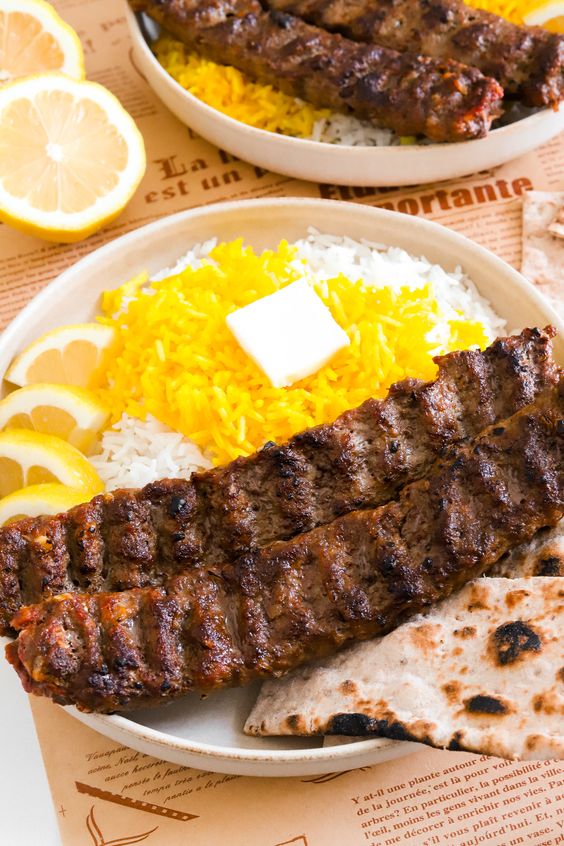
Kabab Koobideh is a beloved Iranian dish that showcases the artistry of Persian grilling. It consists of finely ground meat, traditionally lamb or beef, seasoned with an array of spices and mixed with grated onions. The mixture is then carefully placed onto skewers and grilled to perfection over hot coals. What makes Kabab Koobideh truly exceptional is the detailed preparation and grilling technique.
The meat mixture is often kneaded and pounded to achieve a smooth, almost paste-like consistency, ensuring a tender and succulent final product. The skewers are turned frequently, allowing the meat to cook evenly and develop a smoky, charred exterior while remaining juicy and flavorful on the inside. Served with fragrant saffron rice or next to hot Persian Naan, Kabab Koobideh is a culinary masterpiece that captures the essence of Persian foods. Learn the full Kabab Koobideh recipe and enjoy it at home.
Ghormeh Sabzi
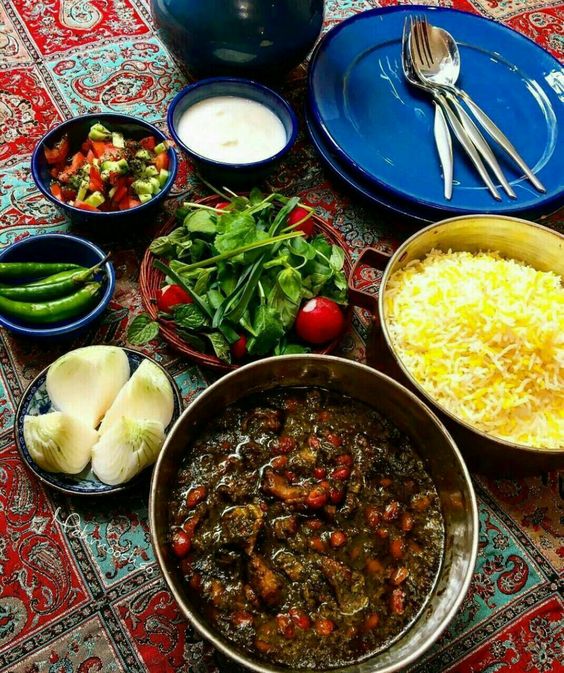
Ghormeh Sabzi is the crown of Persian foods. This aromatic dish combines a variety of aromatic herbs, including parsley, cilantro, and fenugreek, chopped and sautéed until they release their vibrant flavors and become fragrant.
To this green base, tender chunks of meat, often lamb or beef, are added along with kidney beans, dried lime, and a blend of spices. The result is a hearty and deeply flavorful stew that entices the taste buds with a symphony of tastes and textures. The use of dried limes adds a distinctive tangy note to the dish, elevating it to a realm of culinary excellence. Served alongside fluffy saffron rice, Ghormeh Sabzi is a comforting and nourishing dish that holds a special place in the hearts of Iranians and anyone fortunate enough to savor its complex flavors. You can easily make it at home using our step-by-step Ghormeh Sabzi Guide.
Fesenjan
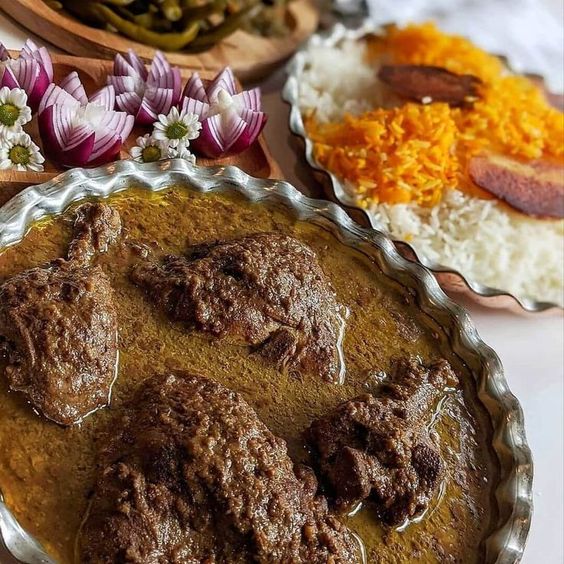
Fesenjan is a luxurious and time-honored Persian stew, loved for its unique taste and appearance. At its heart lies a rich sauce crafted from finely ground walnuts, slowly simmered to achieve a creamy consistency, and enriched with the sweet-tart essence of pomegranate molasses.
This walnut and pomegranate create a sauce that serves as the canvas for the dish, and into it, succulent pieces of chicken or duck are painted. The slow cooking process allows the meat to absorb the richness of the sauce, resulting in tender, flavor-infused bites that practically melt in your mouth. Fesenjan’s complexity is further heightened by the contrast of nutty, sweet, and tangy flavors, making every bite an enchanting journey for the palate. Try our northern homemade secret recipe to enjoy Fesenjan with your family.
Khoresht Gheymeh
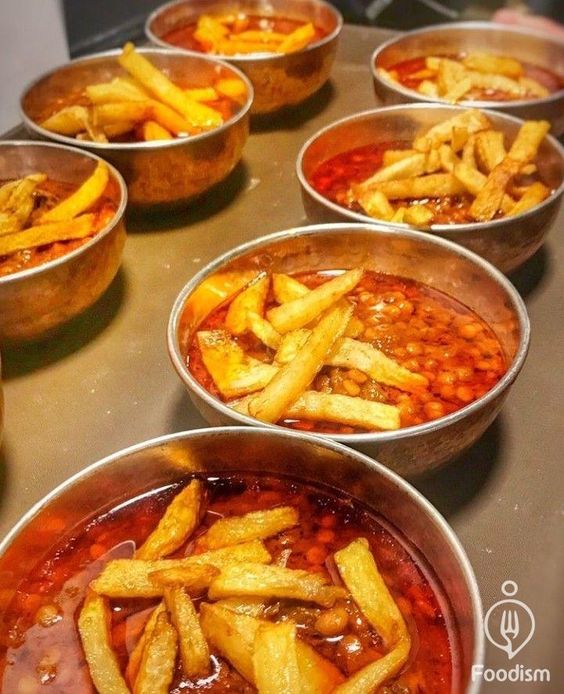
Khoresht Gheymeh is an aromatic and flavorful Persian stew used on many occasions in Iranian life. This dish consists of cubes of lamb meat, slow-cooked with split yellow peas and dried limes. Gheimeh is seasoned with a blend of spices such as cinnamon, creating a complex and aromatic flavor profile. It is often garnished with fried potatoes, adding a crispy textural contrast to the rich, savory stew. Served alongside saffron rice, Gheimeh is a beloved Persian comfort food that is both satisfying and comforting, making it a must at family gatherings and special occasions. Make sure to click on the link below to create and taste a fantastic Khoresht Gheymeh at home.
Mirza Ghasemi
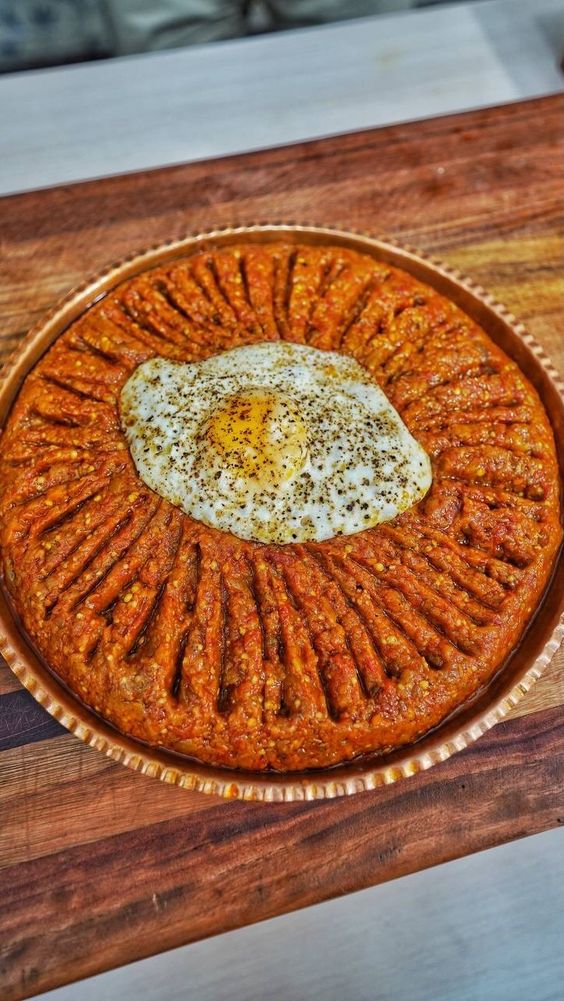
Mirza Ghasemi is a smoky and savory Persian dish that highlights the captivating flavor of the north. This delicious concoction combines grilled and mashed eggplants with tomatoes, garlic, and eggs. The smokiness of the grilled, almost burned eggplants infuses the dish with a deep and rich flavor, while the tomatoes and garlic contribute a tangy and aromatic quality. Mirza Ghasemi is often served as a dip, making it a delightful companion to flatbreads or as a flavorful side dish. Turn your fire alarm off and try our simple Mirza Ghasemi recipe tonight!
Tahdig
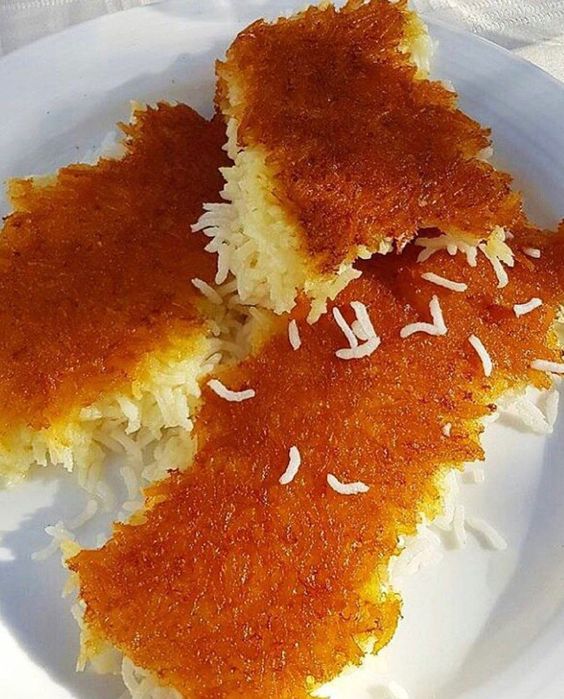
Tahdig is one of the most cherished Persian foods that celebrates the crispy, golden crust formed at the bottom of the pot during cooking. To create Tahdig, rice is first half-cooked and then carefully layered in a pot with butter or oil. As it cooks, the bottom layer transforms into a crispy, golden delight with a texture that ranges from delicate to crunchy. The result is a prized delicacy that can create fights and wars at the table! It can be enjoyed as a standalone treat or as a complement to a variety of Persian Khoreshts or Kababs. Click on the following link to learn the most crispy Tah Dig recipe.
Zereshk Polo
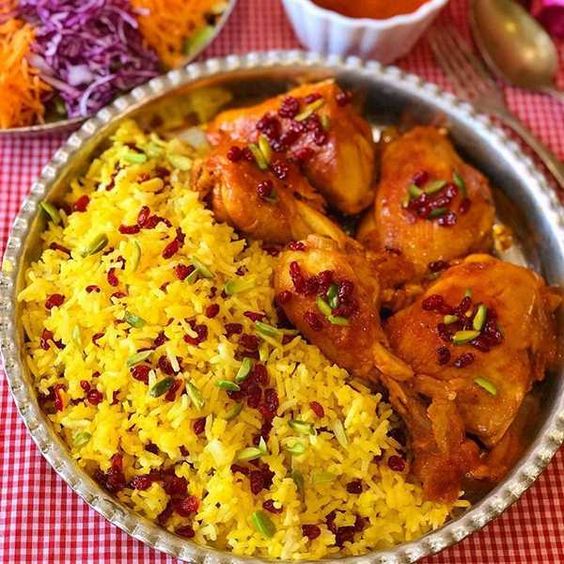
Zereshk Polo is a delightful Persian dish sweet and sour rice dish. What sets this dish apart from other rice dishes is the addition of barberries, small tart red berries that burst with a tangy brightness. These barberries are typically sautéed in butter and a pinch of sugar, enhancing their flavor and making them a vibrant garnish for the rice.
Often, Zereshk Polo is served with tender pieces of chicken, creating a harmonious contrast between the sweet and sour rice and the savory poultry. The result is a visually striking and flavorful dish, which is both comforting and celebratory, making it a favorite choice for festive occasions in Persian foods. Make your gatherings more colorful by learning our detailed Zereshk Polo recipe.
Ash Reshteh
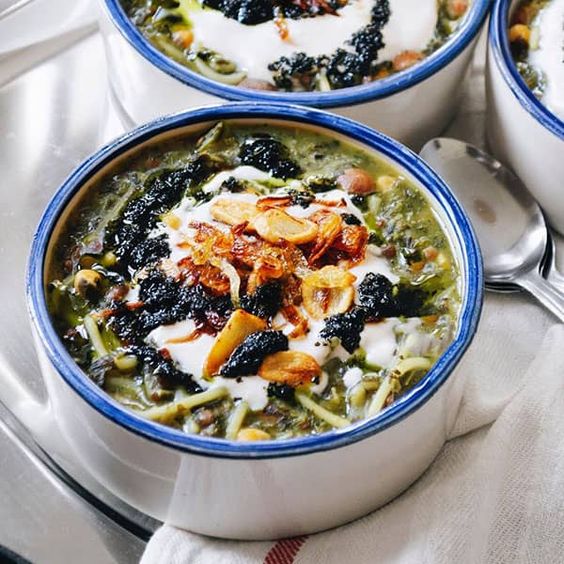
Ash Reshteh is a nourishing Persian noodle soup made with fresh herbs and legumes. First, a blend of herbs such as parsley, cilantro, and spinach, are finely chopped until their aromas are released. To this green base, a combination of legumes, including kidney beans and chickpeas, is added along with Reshteh, a type of Persian noodle. Kashk (whey sauce) and Piaz Dagh (caramelized onion) are often served alongside Ash Reshte to enhance its flavor. Add Ash Reshteh to your Persian foods by reading our step-by-step Ash Reshteh Guide.
Kuku Sabzi
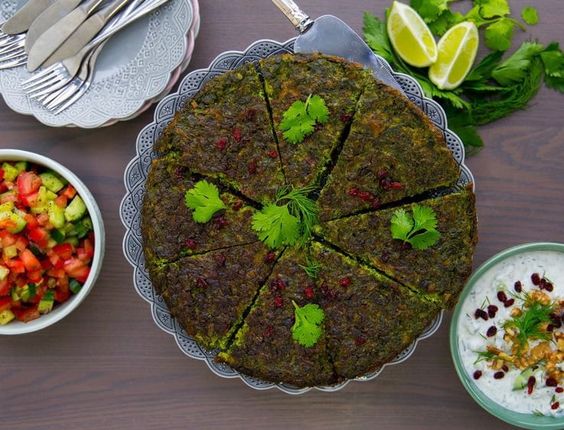
Kuku Sabzi is a delightful Persian herb frittata. It is a captivating blend of various fresh herbs such as cilantro, parsley, dill, and scallions, which are finely chopped and mixed with eggs.
The herbs add an aromatic and earthy quality to the dish. Sometimes, barberries and walnuts are added for a touch of tartness and color. The mixture is then pan-fried to perfection, resulting in a soft and airy green-colored delight that is both visually appealing and bursting with flavor.
Kuku Sabzi is often served with rice or bread, making it a popular appetizer or side dish, and it’s frequently enjoyed during the Persian New Year when its green color symbolizes rebirth and the arrival of spring. Learn about this simple dish and add it to your weekly food schedule by reading our Guide For Vegetarians and Vegans.
Joojeh Kabab
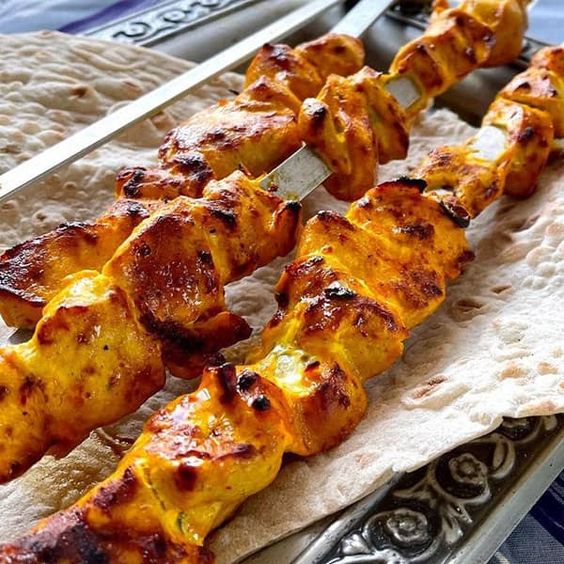
Joojeh Kabab is a delectable Persian food that shines on any festive occasion like a Picnic or grill party. In Joojeh Kabab chicken pieces are marinated in a mixture of yogurt, saffron, lemon juice, and various spices. The marinated chicken is then skewered and grilled over hot coals, resulting in tender, smoky, and juicy chicken kebabs. Joojeh Kabab is often served with rice or warm flatbreads (Naan), accompanied by grilled tomatoes. Get your hands dirty and make it at home using our detailed Joojeh Kabab recipe.
Persian Haleem
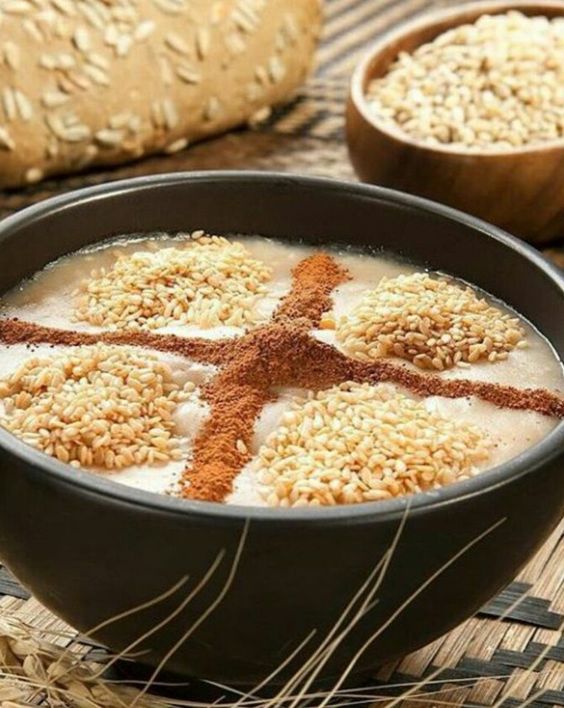
Haleem is a thick and hearty porridge that highlights the use of grains and meat in Persian foods. This dish combines a mixture of wheat and barley grains with tender chunks of meat, typically chicken, lamb, or turkey. The ingredients are slow-cooked to achieve a creamy and porridge-like consistency, with occasional stirring to ensure the grains are fully cooked and melded with the meat.
Haleem is seasoned with a blend of spices, including cinnamon and cumin, offering a fragrant and aromatic profile. It is a beloved dish, often enjoyed as breakfast or during religious and celebratory occasions, and its rich and comforting qualities make it a heartwarming culinary experience. Read our full guide on making Persian Haleem and enjoy this Persian delicacy.
Baghali Polo
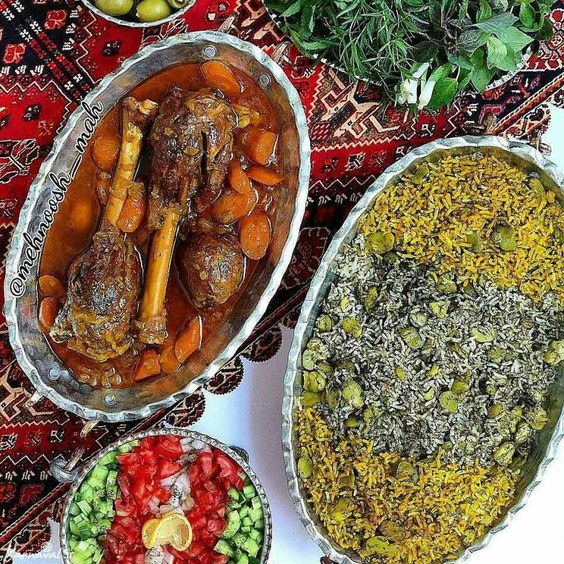
Baghali Polo is a Persian rice dish made with fresh herbs and hearty legumes. The rice is carefully layered with dill, and mixed after cooking enhancing both the aroma and flavor. The lima beans, tender and buttery, add a satisfying textural contrast. Often, Baghali Polo is accompanied by chicken or lamb, which are traditionally slow-cooked and served atop or along the aromatic rice. Baghali Polo is enjoyed year-round but a special version alongside fish is popular during Nowruz, the Persian New Year. By reading our Guide for Vegetarian dishes, you will not only learn about Baghali Polo but also many similar healthy dishes.
Persian Dolmeh
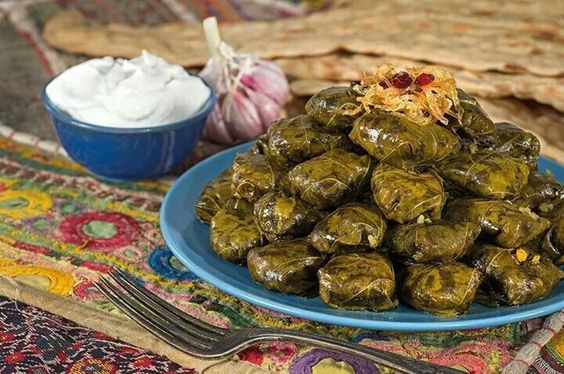
Although Dolmeh takes a lot of time to prepare and cook, the taste is totally worth it. This dish uses grape leaves or various vegetables like bell peppers, tomatoes, and cabbage leaves, carefully stuffed with a flavorful mixture of rice, herbs, and ground meat. The stuffing is seasoned with a blend of aromatic spices, adding depth to every bite. The grape leaves or vegetables are carefully wrapped or stuffed first. Once prepared, the vegetable versions are gently simmered in a tomato-based sauce, while the grape leaves version is cooked in a pomegranate or grape syrup sauce.
Kashk-e Bademjan
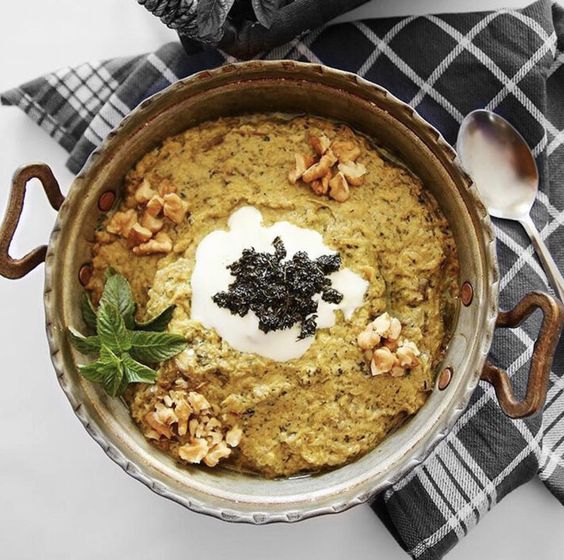
Kashk-e Bademjan is a creamy and captivating Persian eggplant dip with rich and complex flavors. The dish is made with boiled and mashed eggplants blended with Kashk, a type of whey with a distinctive tangy flavor. This creamy base is elevated with the addition of sautéed garlic, dried mint, and onions, which infuse the dip with aromatic notes. Often, Kashk-e Bademjan is garnished with fried mint and caramelized onions, which add both a visual appeal and layers of flavor. The result is a silky, savory dip that pairs perfectly with warm flatbreads. Learn about Kashk-e Bademjan and many other Vegetarian dishes on our Guide for Vegetarian dishes.
Mast-o-Khiar
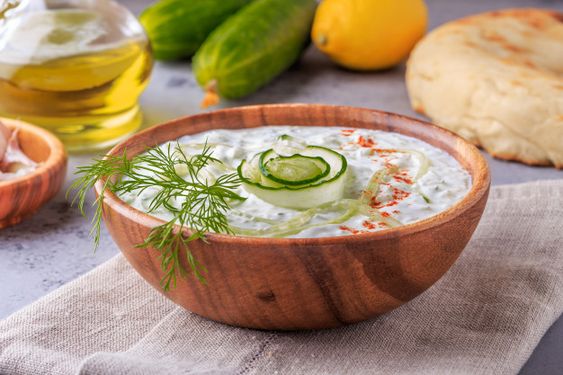
Mast-o-Khiar is a refreshing and cooling Persian yogurt and cucumber dip that adds a delightful contrast to many Persian foods. This simple yet flavorful side dish is made by blending thick yogurt with finely grated or diced cucumbers, and a variety of fresh and dried herbs such as mint, dill, and celeriac that infuse the dip with a burst of fresh, aromatic flavors.
Mast-o-Khiar is often seasoned with a touch of garlic and a pinch of salt to enhance its taste. It is a versatile dish, serving as a counterbalance to the rich and savory flavors of Persian cuisine. Whether enjoyed as a dip for flatbreads or a side dish for grilled meats, Mast-o-Khiar is a beloved component of many Persian meals.
Dizi
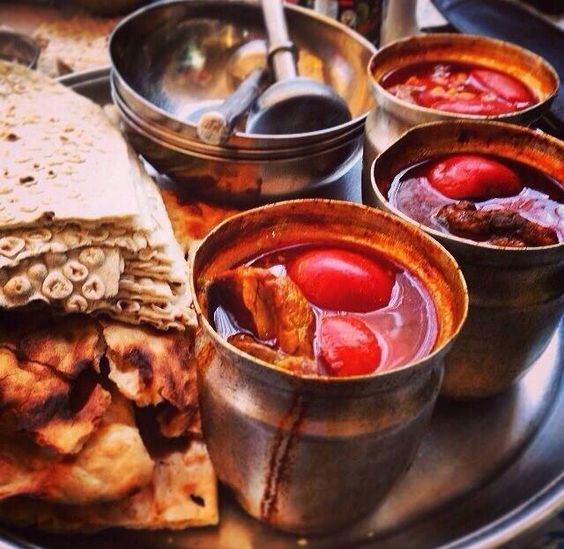
Dizi, also known as Abgoosht, is a traditional Persian dish that combines a rich stew with a unique dining experience. The dish features tender chunks of meat, usually lamb or beef, along with a variety of legumes and vegetables, including chickpeas, white beans, and potatoes.
These ingredients are simmered together in a flavorful broth infused with aromatic spices. What sets Dizi apart is the traditional method of serving. The solids and liquids are separated during cooking, with the broth typically served as a comforting soup. The solid ingredients, including the meat and vegetables, are mashed together and enjoyed with flatbread. This interactive dining style encourages conversation and sharing, making Dizi not just a meal but a social event that brings people together.
Sambooseh
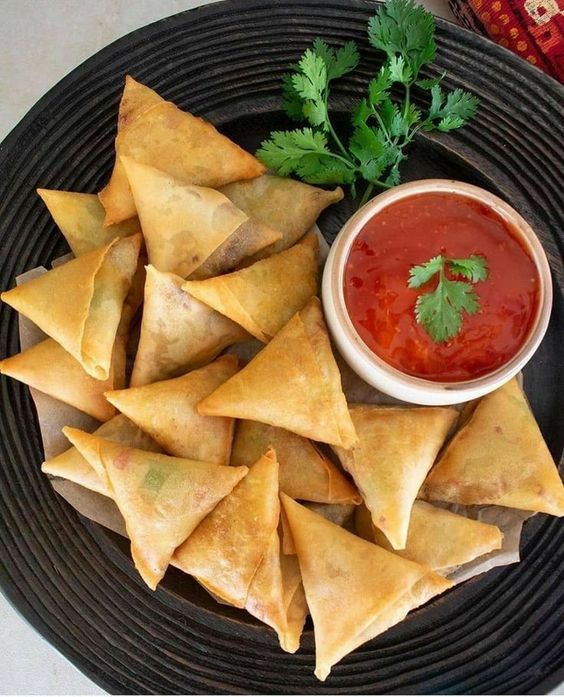
Sambooseh is an exciting southern snack that teases the taste buds with its savory and crispy pastry shells. These pastry pockets are typically filled with a savory or spicy mixture of ground meat, aromatic herbs, and spices. The dough is often made from scratch, or a flatbread called Lavash is used instead. Sambooseh is then fried to golden perfection, resulting in a satisfyingly crunchy exterior that contrasts beautifully with the soft interior. These savory pastries are enjoyed as a popular snack or street food, especially in the south of Iran. Learn about Sambooseh in our Ultimate Guide to the Street Persian Foods of Iran.
Koofteh Tabrizi
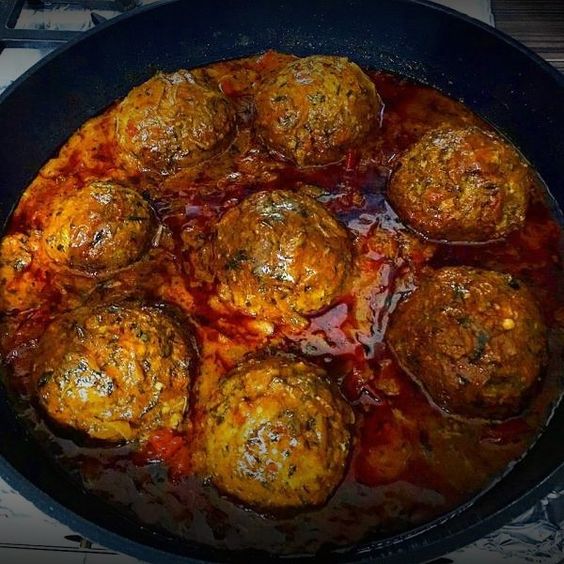
Koofteh Tabrizi is a beloved Persian dish that similar to Dolmeh takes a lot of time to prepare and cook. These meatballs are shaped from a mixture of finely ground meat, usually lamb, combined with rice, aromatic herbs, and spices. Each meatball is shaped by hand and then slow-cooked in a tomato-based sauce. The result is a symphony of tastes and textures, with the tender meatballs offering a delightful contrast to the flavorful sauce. Koofteh Tabrizi is often served with flatbread, creating a complete and satisfying meal that embodies the heartwarming and robust nature of Persian foods. Learn everything you need to know about it on our amazing Koofteh Tabrizi recipe.
Kookoo Sibzamini
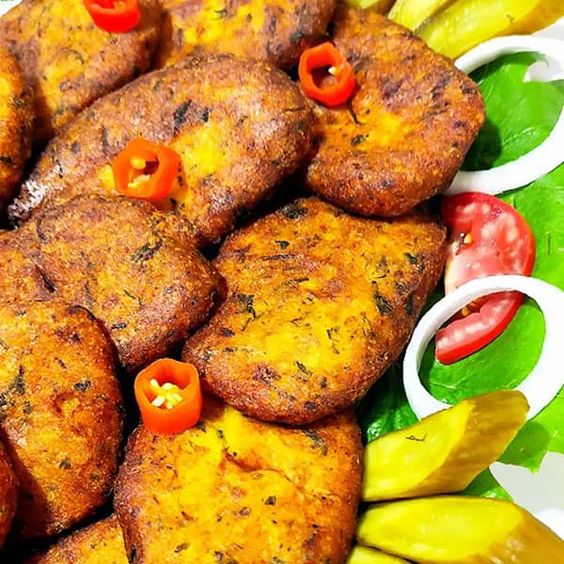
Kookoo Sibzamini is a delightful Persian dish that resembles a potato pancake with a Persian twist. This dish uses grated potatoes combined with onions and aromatic spices. The mixture is then pan-fried until it forms golden, crispy patties. The name “Kookoo” refers to a variety of savory Persian frittatas, and “Sibzamini” signifies potatoes. Kookoo Sibzamini is known for its crispy exterior and tender interior, making it a texturally pleasing and flavorful dish. It is often served as a snack, sandwiched between flatbreads, and garnished with herbs and pickles, offering a delightful combination of flavors and textures. Read about Kookoo Sibzamini and add a simple dish to your routine.
Sosis Bandari
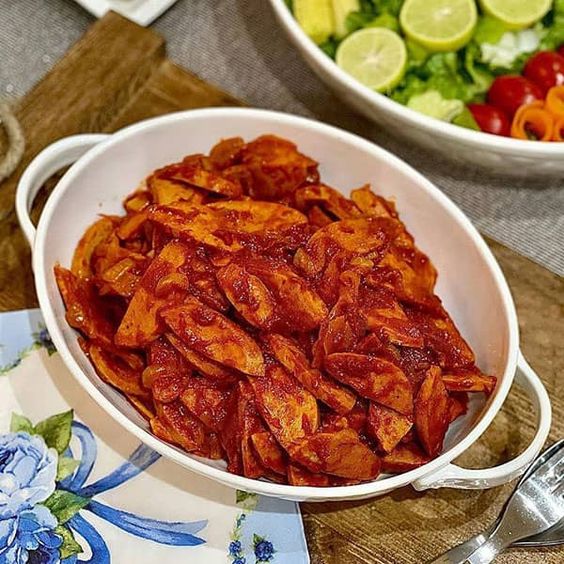
Sosis Bandari the beloved street Persian food, is not just a sausage; it’s a flavorful comfort food for Picnics. Prepared by frying and then cooking the sausages in a sour tomato sauce infused with a blend of aromatic spices, this dish takes on a rich, savory character that elevates it to a culinary delight.
The sausages are often accompanied by potatoes and onions, which are expertly incorporated into the simmering tomato sauce, absorbing the robust flavors and adding a delightful complexity to the overall dish. This simple yet delicious preparation transforms Sosis Bandari into a harmonious blend of fried sausage, tangy tomatoes, and tender vegetables, creating a mouthwatering sandwich that captures the essence of Iranian street food culture. Make Sosis Bandari at home using our detailed guide.
Sabzi Polo ba Mahi
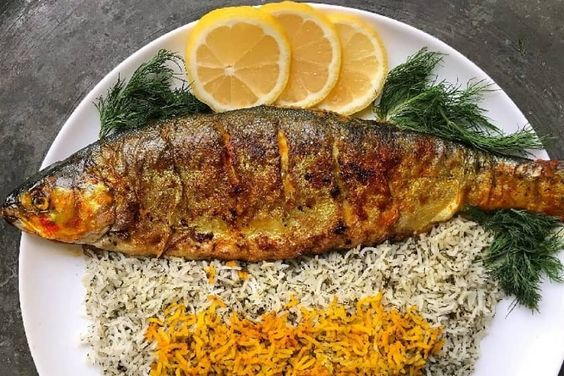
Sabzi Polo ba Mahi is a special Iranian dish often enjoyed during the New Year, Nowruz. It’s a tasty combo of herbed rice and fish. The rice gets its delicious flavor from fresh herbs like dill, cilantro, parsley, and scallions, making it green and fragrant. The fish, usually trout or carp, is marinated in a mix of saffron, garlic, and lemon juice, then grilled or pan-fried until it’s tasty and tender.
This dish is not just yummy; it’s also a part of celebrations, symbolizing new beginnings and the start of spring. Sabzi Polo ba Mahi brings families and friends together during Nowruz, making it a special and joyful meal. Celebrate Nowruz like Iranians by making our special Sabzi Polo Ba Mahi recipe and enjoy it with your loved ones.
Persian Omelet
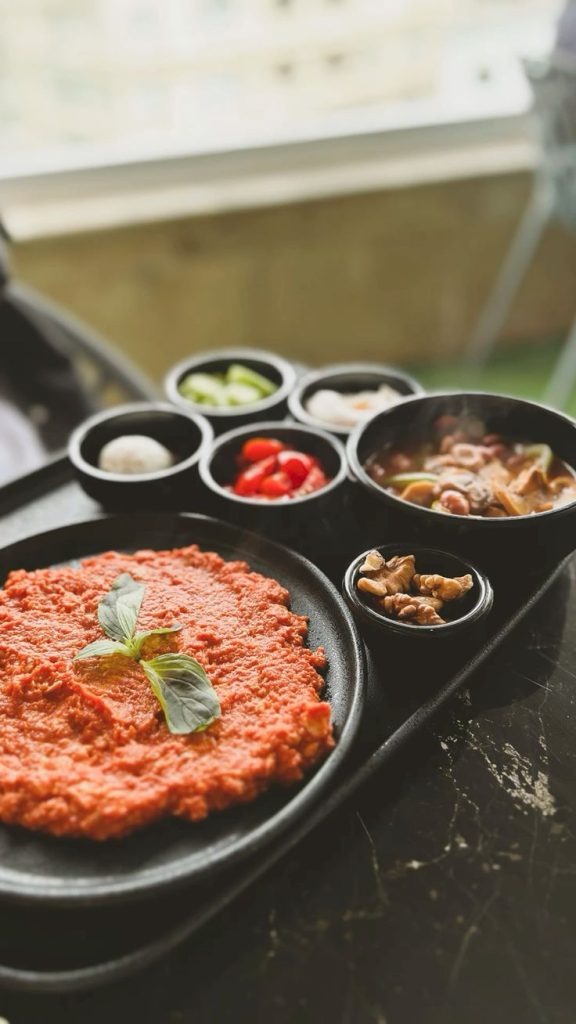
The Persian Omelette is the perfect dish when you are in a hurry and need a fast delicious omelet. Sautee tomatoes, and tomato paste, add eggs, and mix it. This simple dish is served alongside bread and fresh vegetables like basels or mint. It can be a healthy breakfast or just a side dish served in a cafe in Tehran. Make this White Knight, the savior, and the candle in the darkest night for single parents and college students using our detailed Persian Omelet recipe.
Kalam Polo Shirazi
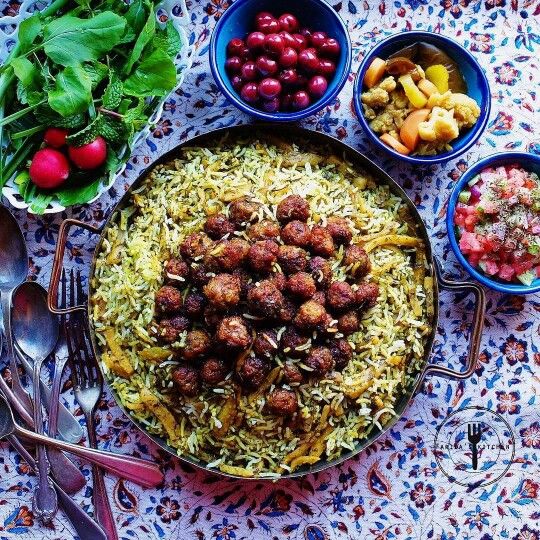
Kalam Polo Shirazi is a tasty Iranian dish with rice, chopped cabbage, and lamb meatballs. It’s a mix of textures and flavors as the rice soaks up the deliciousness of the lamb and the cabbage adds a sweet touch. Kalam Polo Shirazi shows off the creative side of Iranian cooking, giving you a comforting meal that brings together the best of rice, cabbage, and flavorful lamb—perfect for a tasty experience with every bite. Try our authentic recipe of Kalam Polo Shirazi and find yourself in the city of love and poetry, Shiraz.
Loobia Polo
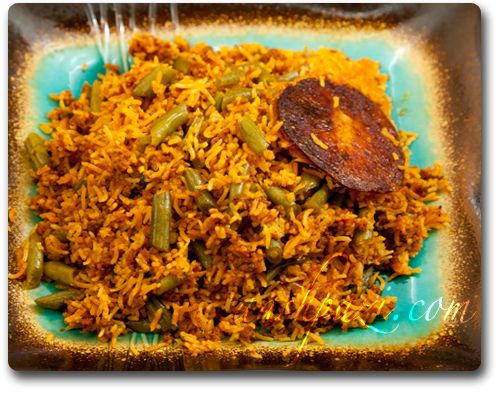
Loobia Polo a cherished Persian dish, combines Persian rice with green beans and lamb meat to create a visually appealing and aromatic delight. Fragrant spices like saffron and turmeric help the rice with rich flavors, complemented by tender chunks of meat, often beef or lamb. The real star of the show is the tahdig, a crispy layer of golden-brown rice formed at the bottom of the pot during cooking. This adds a delightful crunch to each bite, making Loobia Polo a harmonious blend of textures and tastes. Try Loobia Polo using our step-to-step guide and enjoy Persian food’s deliciousness.
Tahchin
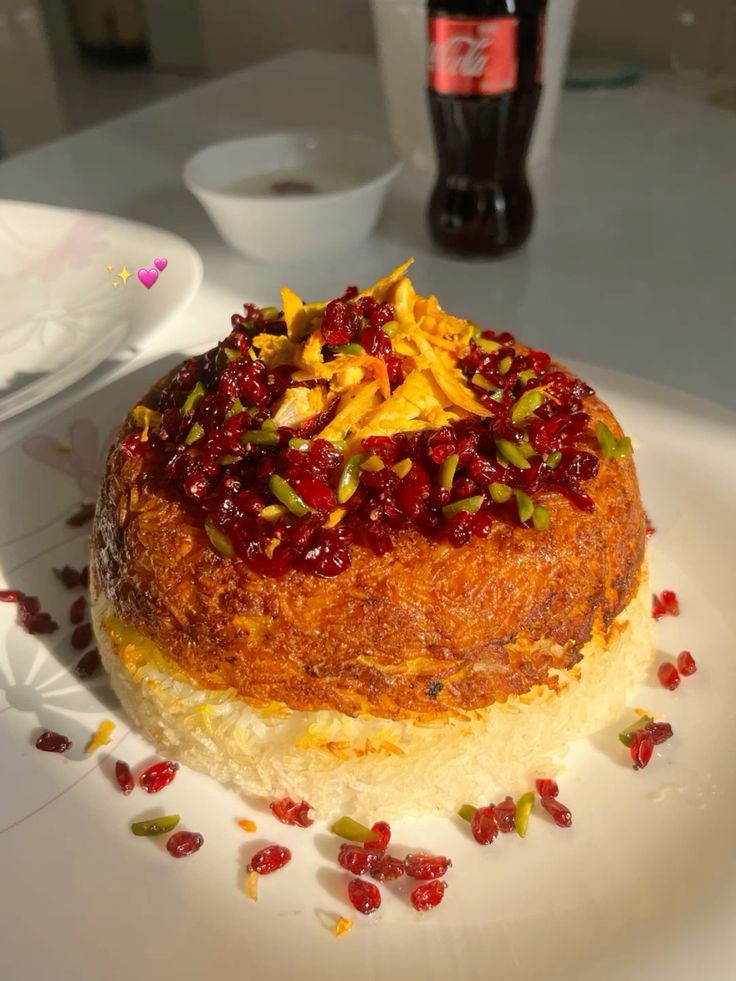
Tahchin a culinary treasure in Persian cuisine, is a savory rice cake that captivates with its exquisite taste and texture. If you want to order Tahchin in a restaurant in Iran you need to do it soon, because they are so popular that they won’t be available otherwise. Half-cooked rice gets soaked in saffron, eggs, and Persian yogurt and then cooked until golden brown. Chicken or lamb chunks are another part of this delicious dish. These proteins are placed between layers of rice to make Tahchin a complete meal. Try our special way of cooking it by using the Best Tahchin Ever in 5 Steps recipe.
Khoresht Bademjan
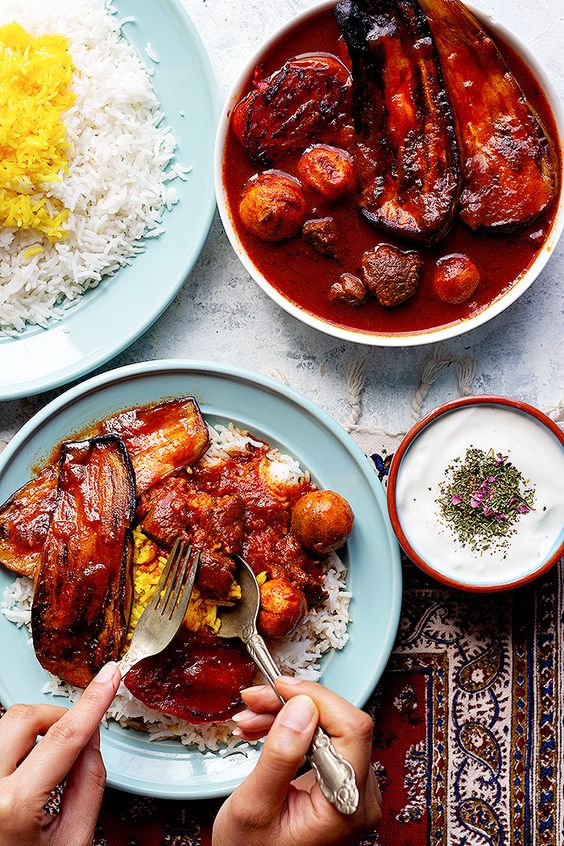
Khoresht Bademjan is a delicious Persian stew that highlights the delicious eggplants alongside meat. In this traditional dish, eggplants are slow-cooked with meat—usually beef or lamb—in a tasty tomato-based sauce. What makes it so tasty is the mix of aromatic spices like turmeric and dried limes, giving the stew its unique flavor. Served alongside rice like all Khoreshts, you can enjoy this delicious food in Iran. Learn how to make Khoresht Bademjan and enjoy this eggplant stew at home.
Baghali Ghatogh
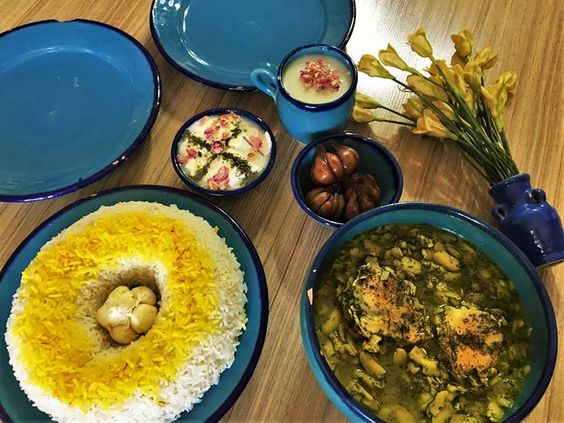
Baghali Ghatogh is a culinary gem from the north of Iran. Imagine tender lima beans, known as “Baghali,” dancing in a pot with dill, garlic, and a secret blend of spices that give this dish its unique character. And here’s the kicker – creamy eggs join the party, creating a texture that’s pure comfort. Picture this delightful mix served alongside rice, and you’ve got a taste of the lush landscapes and culinary traditions of Gilan. Try our authentic Gilani Baghali Ghatogh recipe and find yourself in the green jungles of the north.
Eshkeneh and Kalajoosh
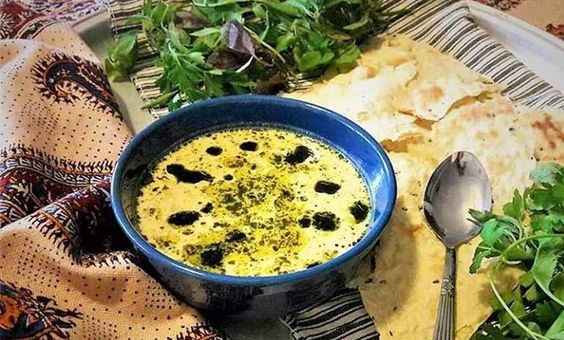
Eshkeneh and Kalajoosh are two distinct yet equally delightful components of Iranian cuisine. Eshkeneh, a hearty soup originating from Azerbaijan, features a flavorful blend of tomatoes, garlic, and various herbs, creating a warming broth. Often enriched with poached eggs, Eshkeneh offers a comforting and nourishing experience, particularly favored during colder seasons. On the other hand, Kalajoosh is a versatile spread made from walnuts, garlic, and aromatic herbs. With its finely chopped or pounded consistency, Kalajoosh becomes a flavorful condiment that pairs exceptionally well with bread. Learn about different varieties of these delicious foods in our well-written guide about Eshkeneh and Kalajoosh.
Persian Ice Cream

Persian Ice Cream or “Bastani Sonnati” is a delightful frozen treat celebrated for its unique and exotic flavors. In contrast to traditional ice cream, Bastani incorporates the distinctive essence of rosewater, saffron, and pistachios. The ice cream itself has a smooth and creamy texture, often made with a custard base. Bastani is often served in carrot juice or alongside ice noodles called Faloodeh. You can get the best version of Bastani and Faloodeh in Shiraz. Learn how to make Persian Ice Cream at home and enjoy it with your loved ones.
Ghottab
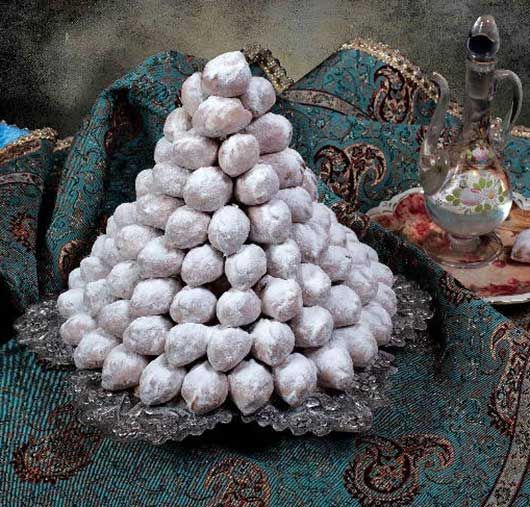
Ghottab, a delicious Iranian pastry, has its roots in the charming city of Yazd. Imagine a crescent-shaped delight with a crumbly dough that wraps around a delightful filling of ground almonds, cardamom, and sugar. The filling adds a nutty and aromatic kick, making each bite a flavorful experience. The pastry itself has a melt-in-your-mouth texture, and once shaped, Ghottab is often coated with powdered sugar for a finishing touch. Learn how to bake this Yazdi delight at home by reading our full guide on How to make Ghottab.
Adas Polo
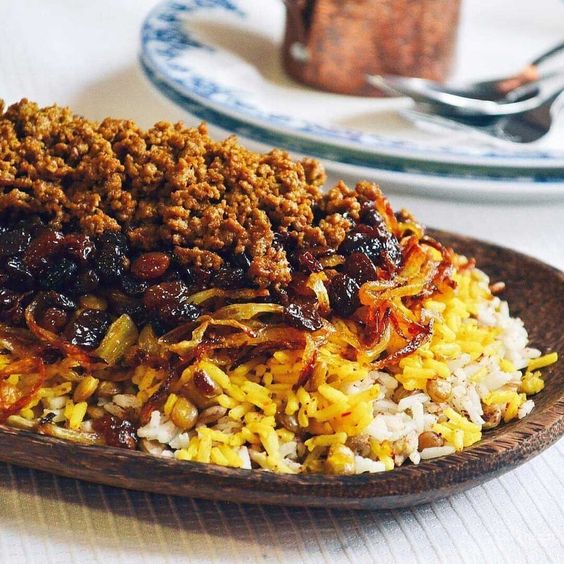
Adas Polo is another rice dish, made with rice, dentils, and sometimes meatballs. Caramelized onions and plump raisins add an amazing sweetness to the dish. The lentils contribute a nice texture to the rice, making Adas Polo a satisfying and delicious meal on its own or alongside Dizi. It can also be served alongside Persian yogurt, meatballs or Kabab Shami which is a patty made of ground lamb meat. Learn Adas Polo, and use it alongside your favorite protein today.
Persian Falafel
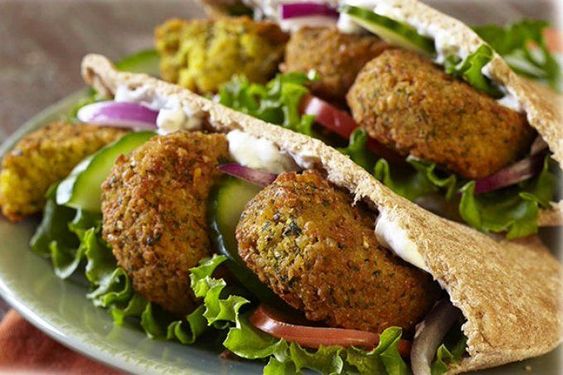
Persian Falafel offers a delightful twist to the traditional Middle Eastern dish. Originating from the south of Iran, these chickpea-based treats are made with ground chickpeas, fresh herbs like parsley and cilantro, and a blend of aromatic spices such as cumin and coriander. What distinguishes Persian falafel is its unique small, round shape, often featuring a slight thumbprint impression. These bite-sized falafel are deep-fried to achieve a crispy exterior while maintaining a tender and flavorful interior. It’s one of the most loved street foods in Iran and a southern delicacy.
Learn this delightful sandwich and add it to your routine by reading our detailed Falafel recipe.
Sholeh Zard
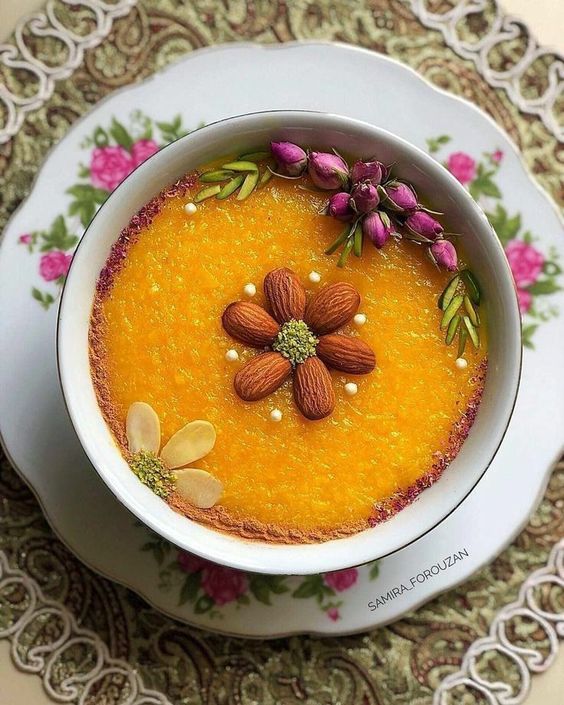
Sholeh Zard is a fragrant and sweet Persian rice pudding. This sweet-tasting dessert is made from rice, which is cooked until tender and then seasoned with saffron, rosewater, and ground cardamom. Sholeh Zard is sweetened with sugar and garnished with slivered almonds, pistachios, and cinnamon. It is a dessert often associated with special occasions and celebrations. Learn this Persian dessert and enjoy the sweetness and amazing aroma of Shole Zard.
Lavashak
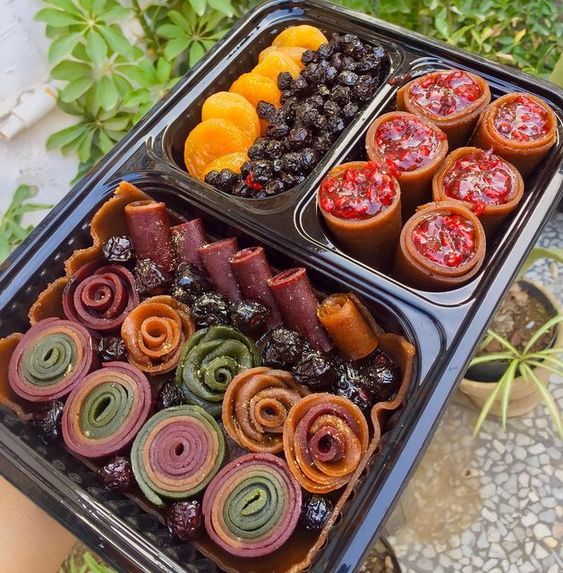
Lavashak or Fruit Roll-Ups is a popular Iranian snack that offers a burst of fruity flavor in every bite. This chewy and sweet treat is made from dried fruit pulp, typically sourced from fruits like plums, apricots, or sour cherries. The fruit pulp is pureed and then spread thinly, dried, and rolled into sheets.
The result is a portable and flavorful snack that captures the essence of the fruit’s natural sweetness and tartness. Lavashak is a favorite snack enjoyed throughout the day and is especially cherished during outdoor activities and picnics by children.
Naan-e Barbari
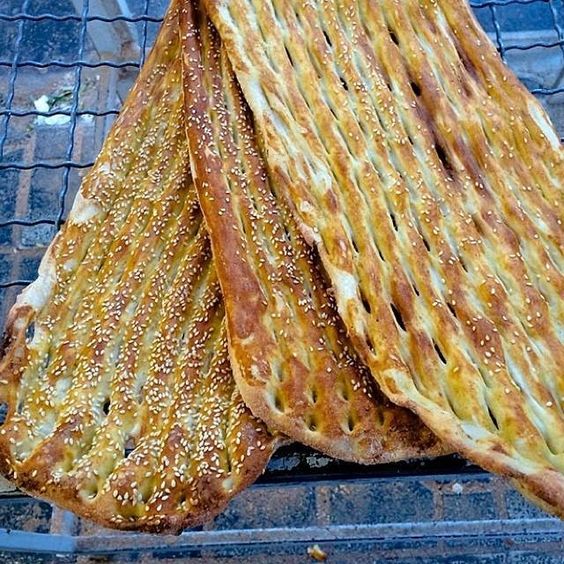
Naan-e Barbari is a beloved and thick Persian bread. This traditional bread is made from a simple dough of flour, water, yeast, and salt, with the addition of sesame seeds. What sets Naan-e Barbari apart is its unique preparation method. The dough is stretched thinly and then baked on the floor of a hot clay oven, known as a Tanoor, resulting in a crisp exterior and a tender, chewy interior. The bread is often torn by hand and served fresh and warm, making it an ideal accompaniment to various Persian foods mostly used as breakfast.
Aash-e Sholeh Ghalamkar
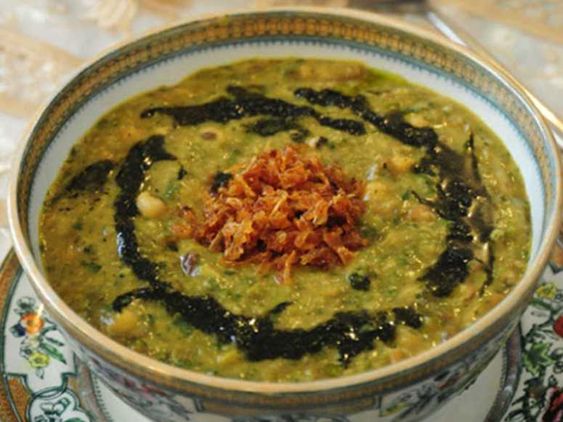
Aash-e Sholeh Ghalamkar is a flavorful Persian porridge dish similar to Halim. This nourishing food uses a base of beans, lentils, and meat making it nutritious and maybe even heavy for some people. What sets it apart is the addition of a variety of fresh herbs, including parsley, cilantro, and mint, which help it get an aromatic and refreshing quality. The dish is often seasoned with spices like turmeric, creating a complex and harmonious flavor profile.
Khoresht-e Bamieh or Okra Stew
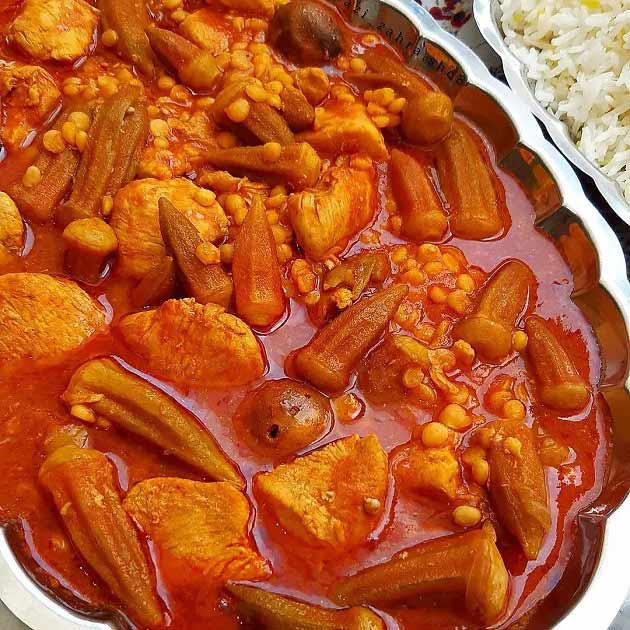
Khoresht Bamieh is very similar to celery stew, instead of celery you can use Okra which has a unique taste. The addition of tomatoes and tomato paste brings a tangy and rich element to the stew, further enhancing its depth. As the stew gently cooks, the flavors become more complex. Served alongside Persian rice or freshly baked bread, this Okra stew can be great for people in search of new tastes.
Abdoogh Khiar
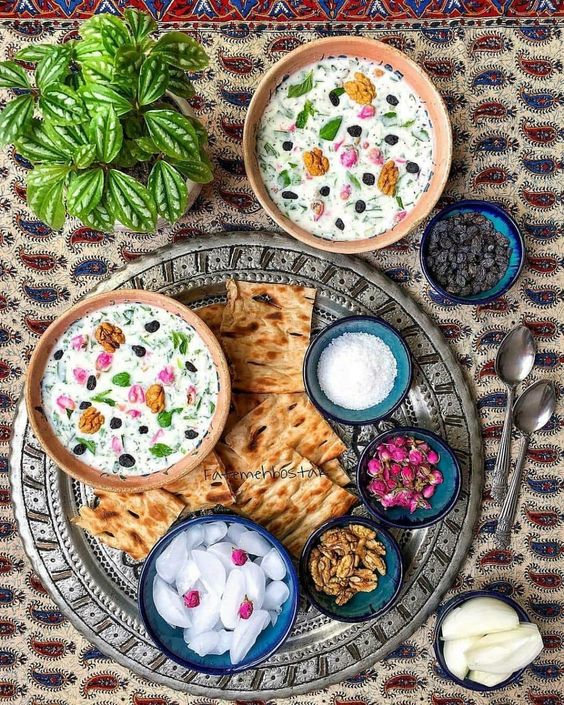
Abdoogh Khiar is a simple dish perfect for hot summer days. This delightful yogurt and cucumber cold soup combines yogurt with cucumbers, and fresh herbs like dill and mint, creating a refreshing flavor profile. A sprinkle of dried mint and crushed walnuts adds a delightful crunch and earthy taste. The addition of chilled water gives the soup a light and refreshing consistency. Served with Persian dried bread or Noon Khoshkeh Abdoogh Khiar is a truly satisfying dish that can be a complete meal or a side dish.
Sir Torshi
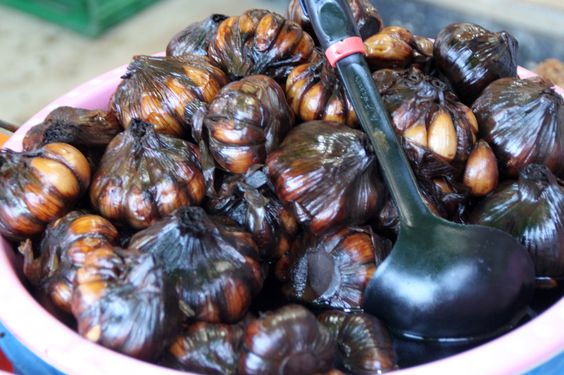
Originating from the beautiful northern region of Iran, Sir Torshi is a highly regarded garlic pickle. It is made by combining garlic cloves, vinegar, and aromatic spices. It pairs exceptionally well with stews, kebabs, and especially fresh fish, enhancing their flavors with its strong and aromatic qualities. Make sure to brush your teeth and take lots of mint candy after eating Sir Torshi to avoid bad breath and enjoy this delicious Persian pickle.
Shishlik
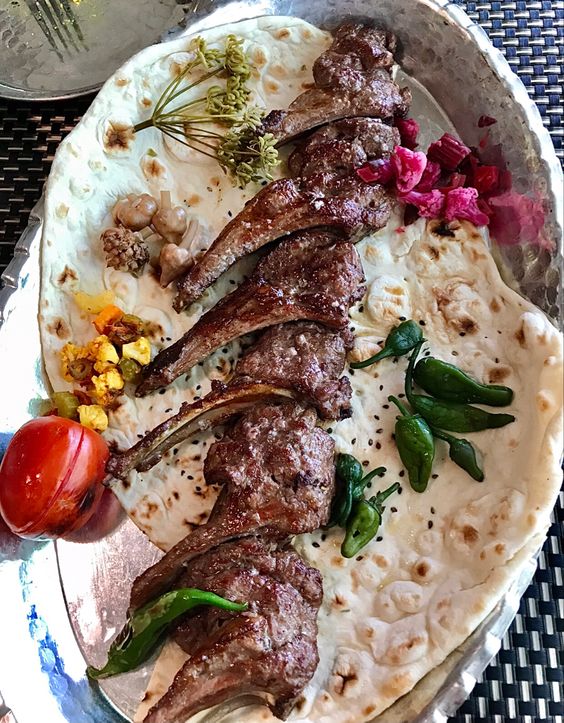
Shishlik, a beloved Iranian dish, known as shish kabab in other countries, is one of the most delicious Persian foods. This luxurious dish uses tender pieces of lamb chops, marinated to perfection, and expertly grilled over hot coals. The attention to detail and grilling technique make it an outstanding treat. This premium experience comes at a higher cost, as the luxurious Shishlik is known to be pricey. If you’re looking for an unforgettable and upscale dining experience, Shandiz near Mashhad is the place to go, where you can enjoy the finest and most authentic version of this iconic Persian dish.
Salad Shirazi
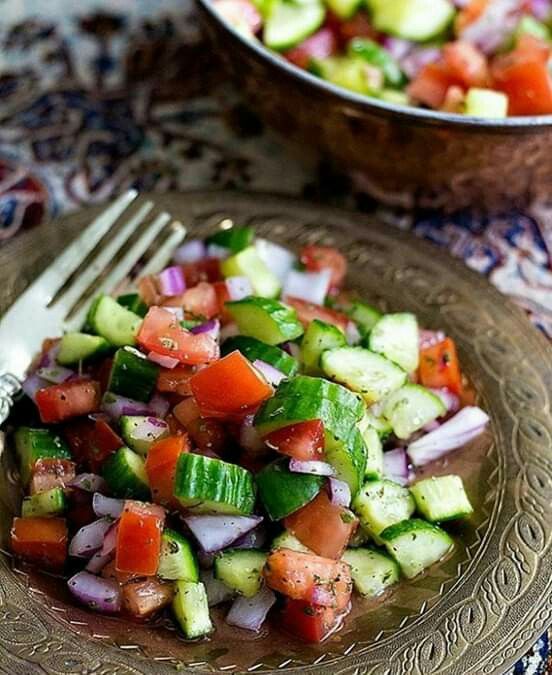
Salad Shirazi is made of diced tomatoes, cucumbers, and onion in a sour salty lime or vinegar base. You can also add dried veggies such as mint, celeriac, or fresh basil to enhance the flavor and aroma. It’s the perfect partner for a steaming plate of kebabs, Khoreshts, and especially Lubia Polo. You can find it in most restaurants and all Iranian homes. Very similar to a Mexican salsa, you can use Salad Shirazi as a sandwich dressing too. So next time you need a quick and healthy option and are out of lettuce, look no further than the humble Shirazi Salad.
Isfahani Beryan (Beryoon)
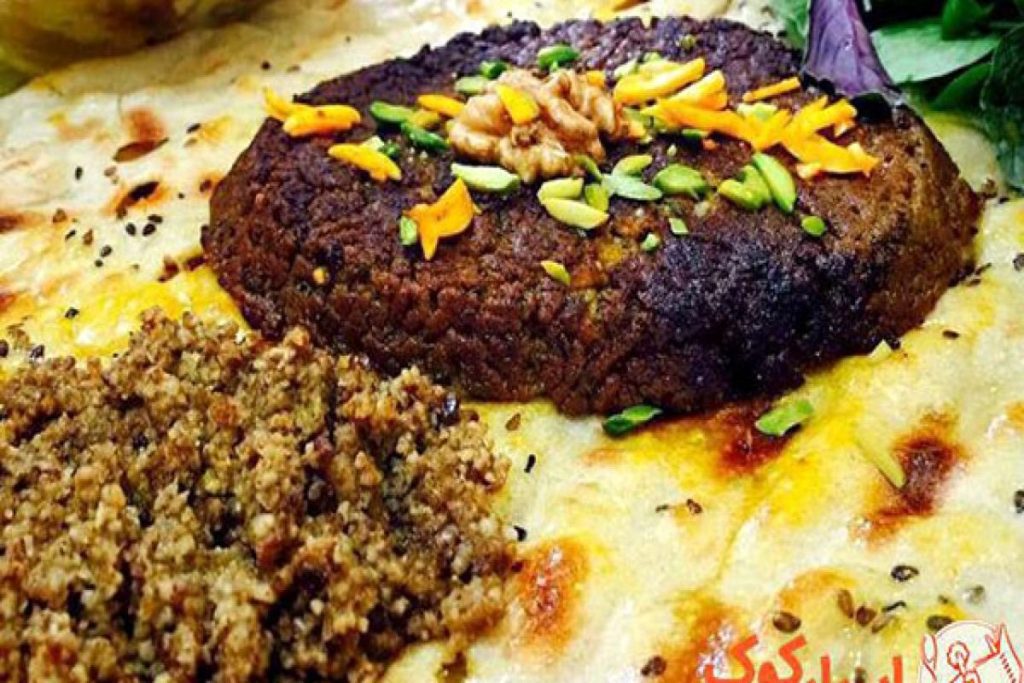
Beryan the traditional dish of Isfahan is a delicious, aromatic meat dish. Different than Indian Biryani it doesn’t have rice and is served alongside flatbread, fresh veggies, and onion. It consists of fatty ground lamb, saffron, and cinnamon and has a side dish called Abgoosht that can be even tastier than the original dish. Abgooshte Beryoon as they call it in Isfahan, consists of meat broth, Kashak (whey sauce), and chunks of bread. For the most authentic Beryan, you need to visit Isfahan and try one of the best Persian foods in traditional Bazaars of Isfahan.
Gheymeh Nesar
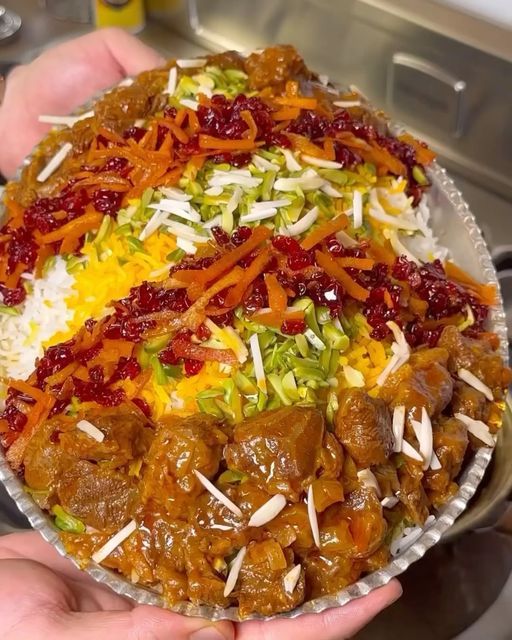
Gheymeh Nesar, the traditional dish of Qazvin is a blessing for the eye and the tastebuds. Saffron rice, almonds, orange zest, pistachios, and juicy chunks of lamb meat work perfectly to make one of the most delicious Persian foods. Usually, Iranian chefs decorate it with ingredients like almonds and pistachios to show off their plating skills. You can taste this aromatic and delicious food in the city of Qazvin, and enjoy their hospitality as well.
Khoresht Mast
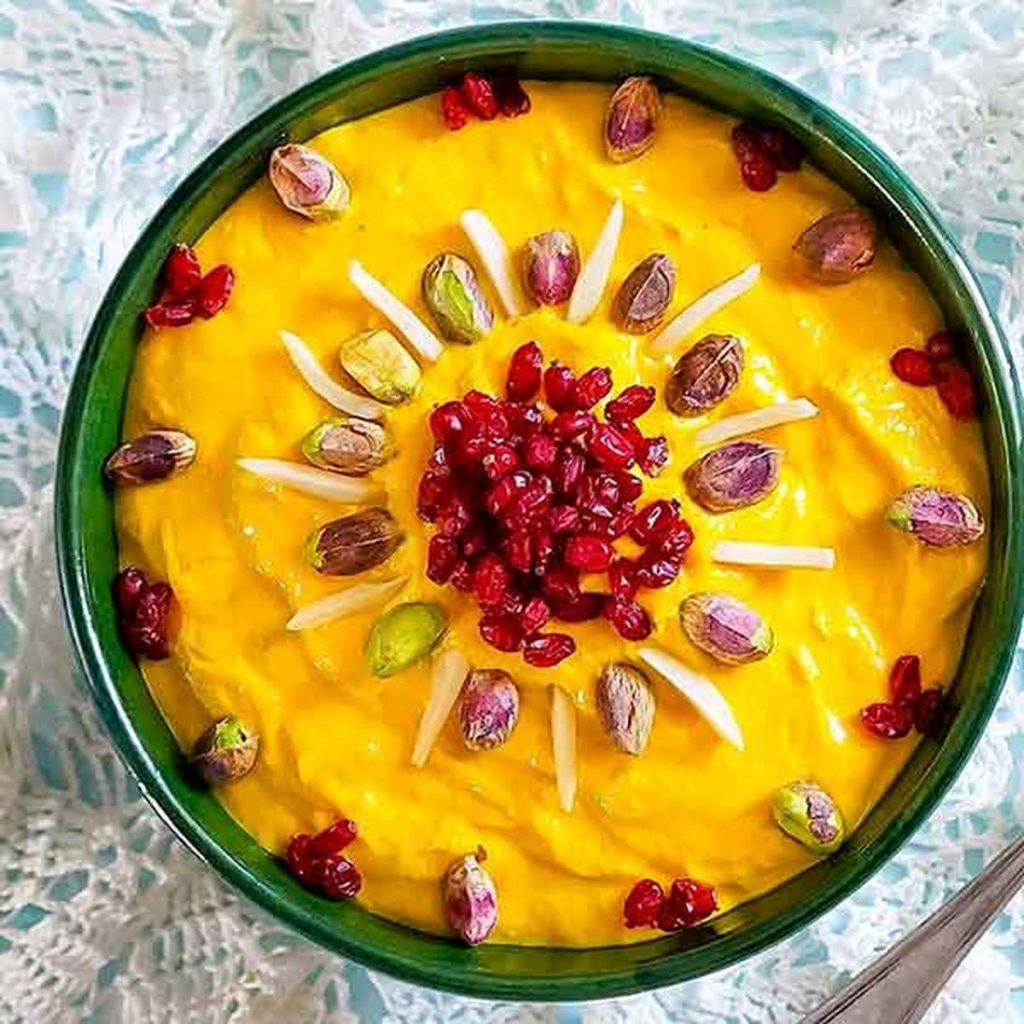
Khoresht Mast is a sweet side dish made from saffron, yogurt, and lamb neck. As one of the weirdest foods on this list, Khoresht Mast is definitely unique. It looks like a dessert and has a sweet taste to it, but the shredded and mixed lamb neck makes it a side dish perfect to accompany Kabab Koobideh and Joojeh Kabab. Present at most weddings in Isfahan it is considered a luxurious addition to the ceremonies. Some people even add pieces of walnuts, pistachios, or almonds to give it occasional crunches in every bite. Try Khoresht Mast in Isfahan, and enjoy this new experience best presented in the famous Shahrzad Restaurant.
Kaleh Pacheh
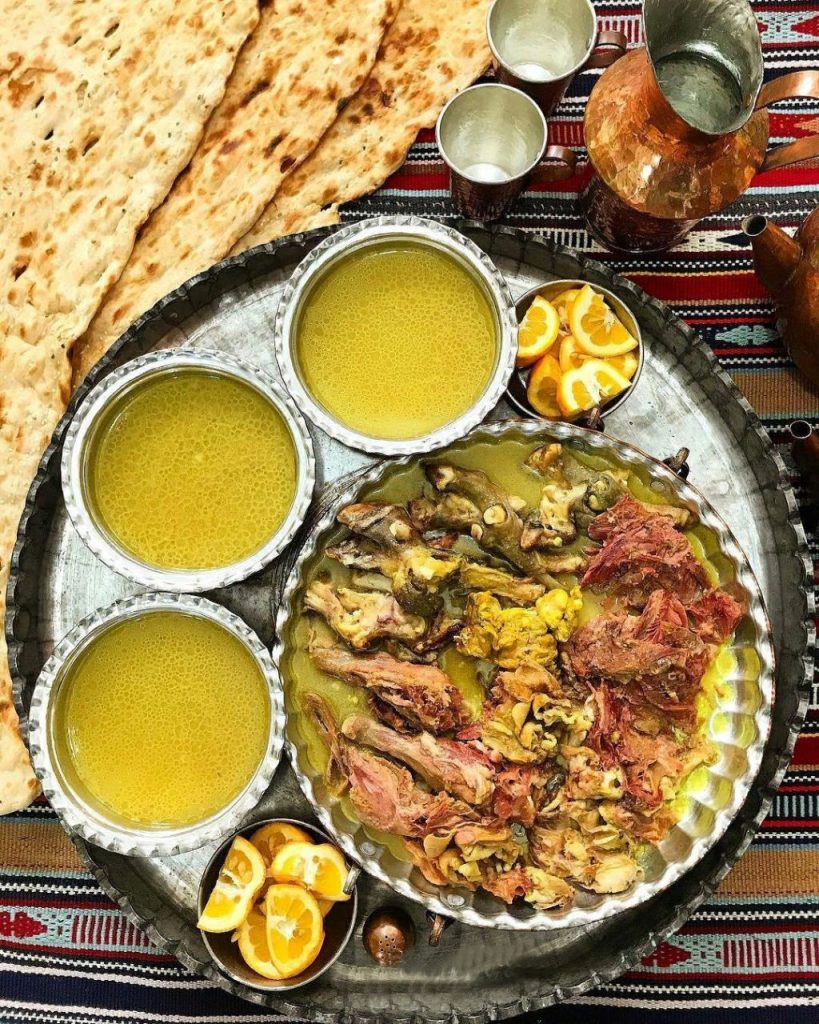
If you thought Khoresht Mast was weird get ready to meet the weirdest Iranian food. Kaleh Pacheh is literally the head and legs of lamb slow-cooked to perfection. It doesn’t look or smell good at all, but it is filling, fatty and delicious. Usually served in the morning, Kaleh Pacheh makes sure that you can’t have an early lunch. If you are a vegetarian, don’t even look at the photos but if you are a meat lover, you will fall in love with this weirdest of Persian foods. Try Kaleh Pacheh in one of the famous Tabakhi shops in Tehran and let us know what you think in the comments.
Persian Kotlet
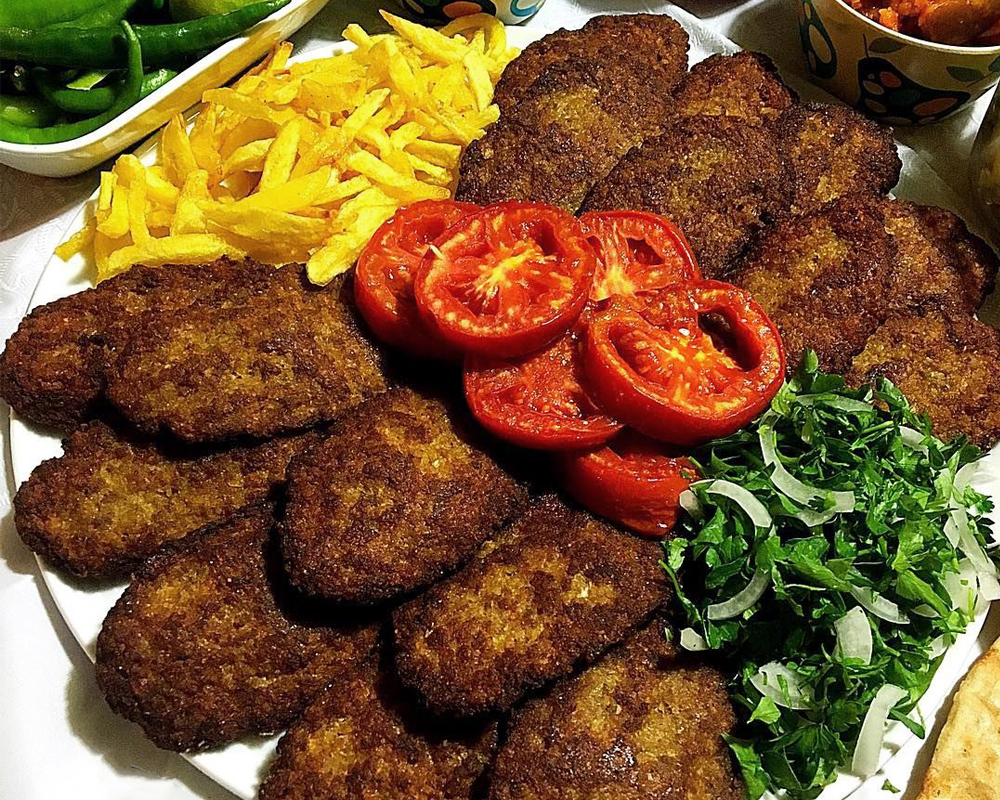
Kotlet is made of ground lamb, potatoes, and eggs, shaped like a patty, and pan-fried or baked. The nostalgic smell of frying Kotlets in a pan is mouthwatering for every Iranian and can remind them of good childhood memories. Kotlet can be served alongside rice or flatbread but the most common form is a Kotlet sandwich, with lettuce, pickles and tomatoes. You can taste this delicious Iranian street food in most Iranian cities and enjoy the combination of potatoes and lamb.
Jigar
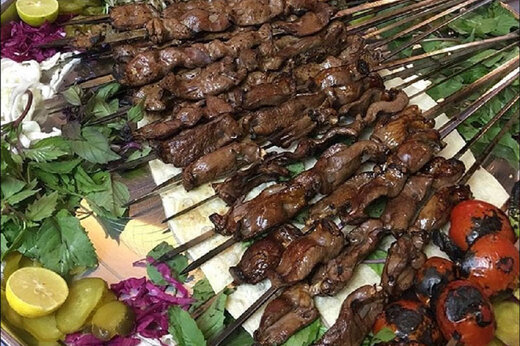
Jigar is grilled lamb’s liver, slowly cooked on charcoals. It is a nutritious and juicy Kabab full of Vitamin B that usually is served medium rare with fresh veggies, onion, and Persian yogurt. The Jigaraki shops of Iran provide other parts of the lamb like the Donbeh (fat), Del (the heart), Gholveh (the kidneys), and tomato Kababs. Jigar has a unique fatty, earthy, smoky taste with a gorgeous black coloring. The sticks are usually small, so a typical order would be 5 sticks of Jigar, 2 sticks of Gholveh, 2 sticks of Del, and maybe some Donbeh (fat) sticks. Try Jigar in Iran and enjoy this exotic dish.
Persian Macaroni
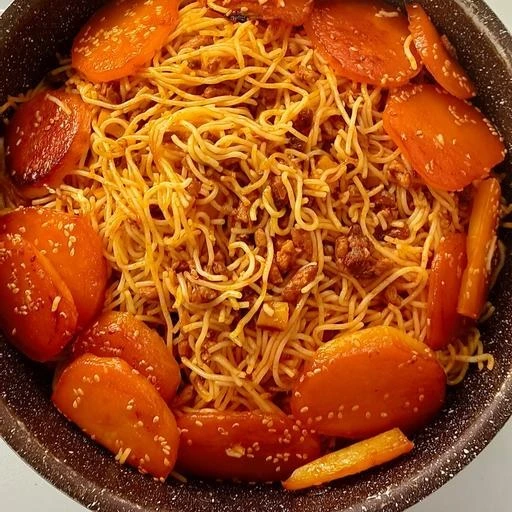
Italians please look away! Persian Macaroni is made like Persian rice, boil the pasta, add it to the sauce put your desired Tahdig to the bottom of the pot, and then steam cook it. You wouldn’t believe how many fights are held over Tahdige Macaroni in Persian houses. Persian Macaroni is a different take on pasta and is nothing similar to Italian pasta. It is served alongside pickles, or yogurts and is a delicious but controversial dish.
Havij Bastani
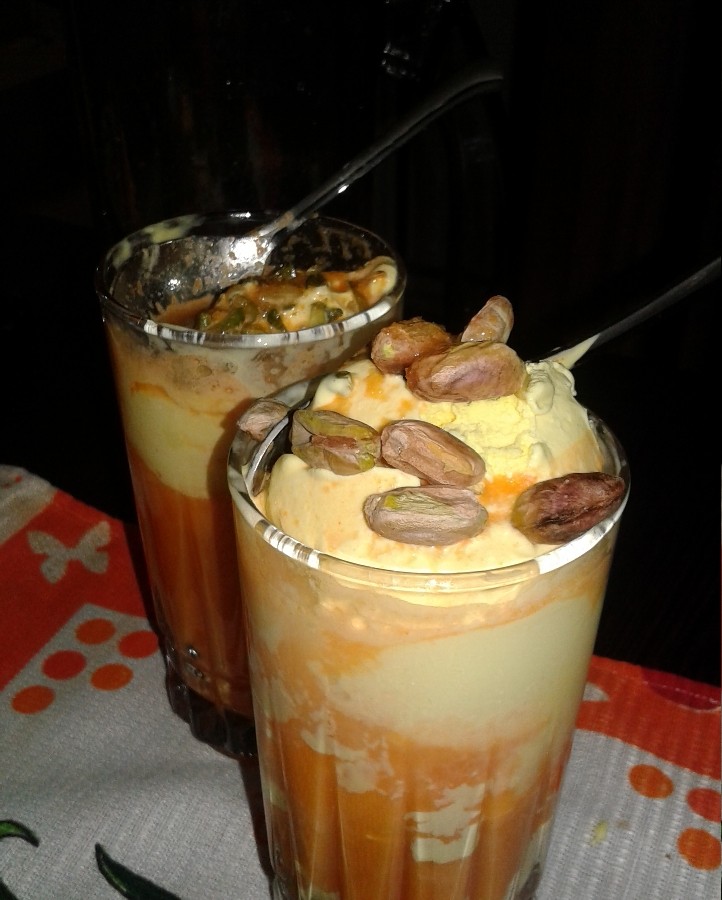
Havij Bastani is saffron ice cream, dipped in carrot juice. It is a popular drink in Iran perfect to cool the hot summers, with its delicious sweet taste. You just need some carrot juice and traditional Persian ice cream and you are ready to go. You can eat the ice cream with a spoon and take sips of carrot juice or mix the ice cream to make an extremely sweet drink. This combination can be made with melon juice or milk and banana or Shirmoz Bastani too but the most popular version is carrot juice. You can try Havij (Abhavij) Bastani in Iranian juice stores or try to make it at home.
Doogho Gooshfil
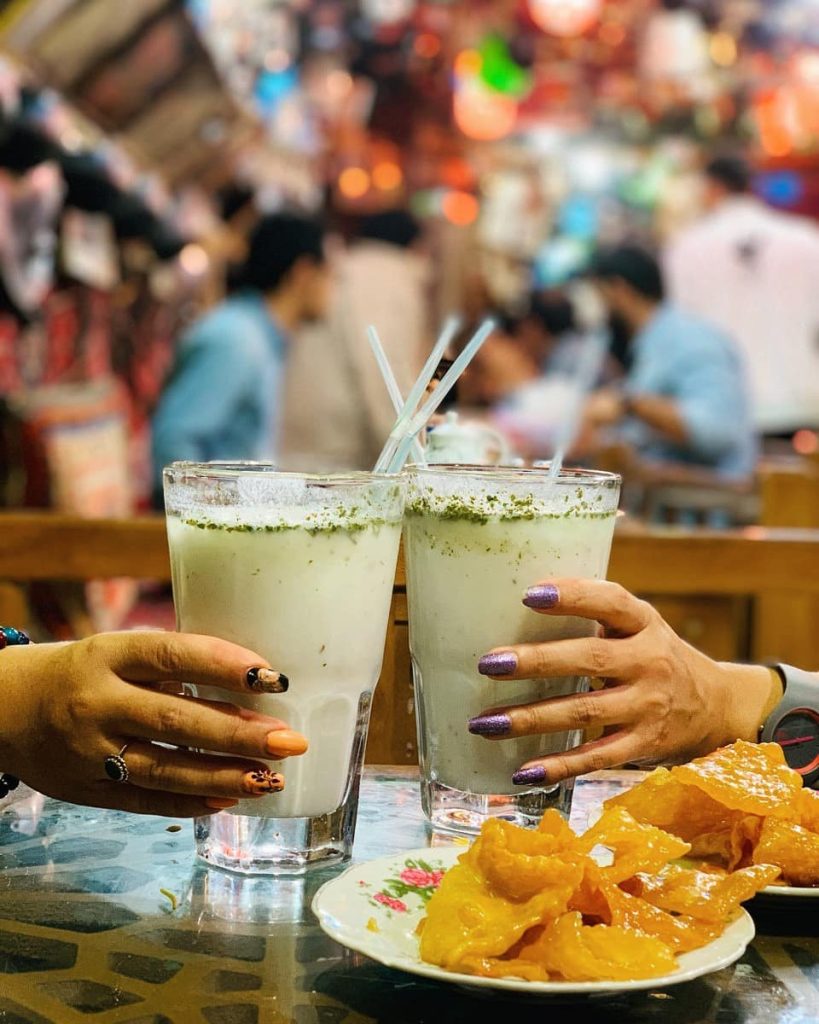
Doogho Gooshfil is a combination of a sour Persian yogurt drink called Dough and crunchy pillow sweets. This traditional snack of Isfahan is weird even for Iranians who don’t live in Isfahan. Iranians usually enjoy their sweets with tea, and the idea of Doogh, a cold sour drink replacing their beloved hot tea is strange to them. Another version of this beloved dish is called Doogho Baghlava, which uses hot Baghlava filled with walnuts and cinnamon instead of the simple Gooshfil. If you ever visit Isfahan, don’t forget to try their iconic dish Doogho Gooshfil.
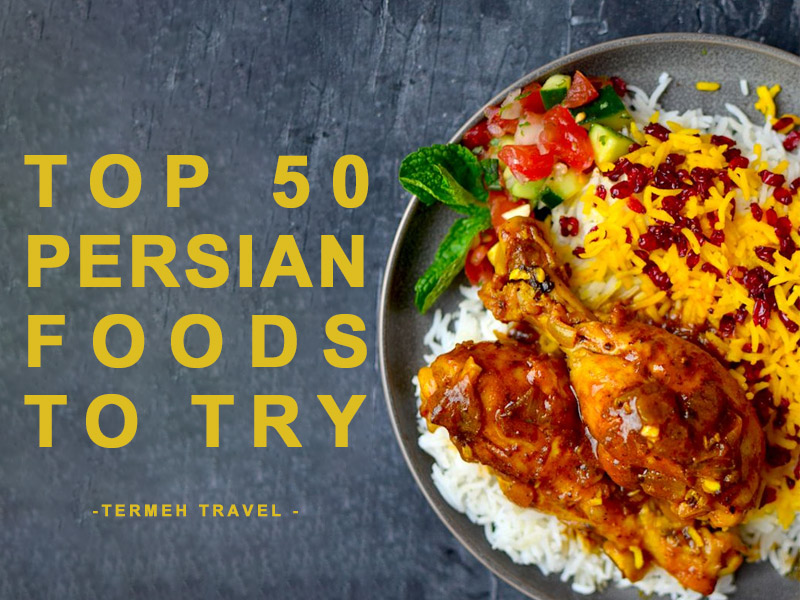




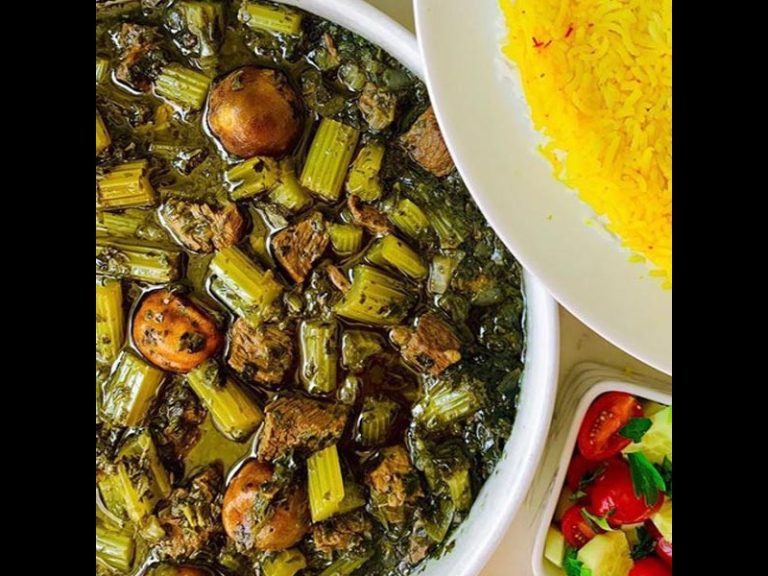
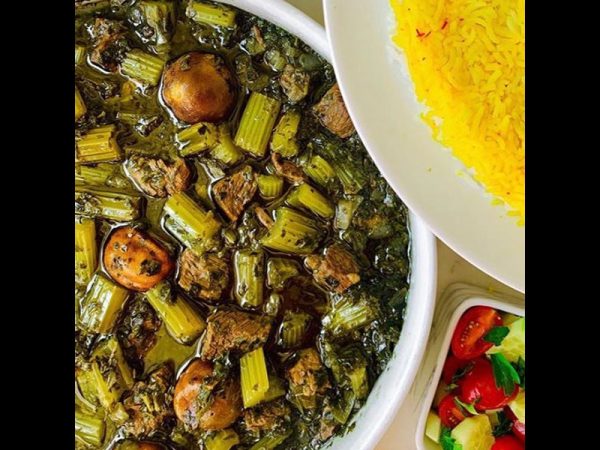
Leave a Comment